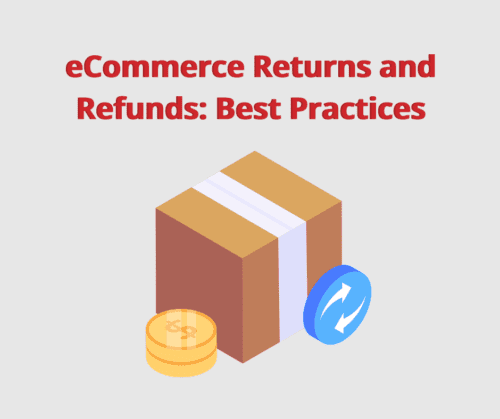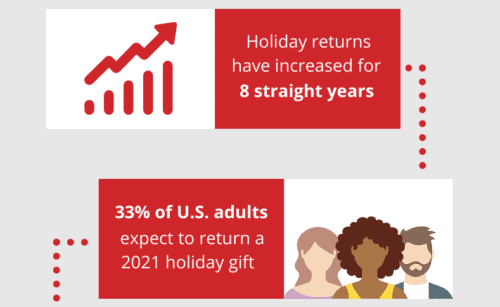If you’re not sure which inventory management software is best for your business, this guide will compare the top solutions so you can make the right decision.
I’m Oliver Munro—I was an inventory manager and warehouse manager for over six years. I’ve worked in multiple organizations in different sectors, including manufacturing, distribution, and retail, and used many different inventory management software tools along the way.
To make a fair assessment of the top inventory management software, I compared the pricing, reputation, and functionality of dozens of popular inventory management tools—combined with my own experience using different systems.
Keep reading for a complete breakdown of the seven best inventory management software systems for 2024.
7 best inventory management software options
| Software | Best for | Capterra rating | Pricing (USD) |
|---|---|---|---|
| Katana | Production planning, Manufacturing businesses, Bill of materials management | 4.6 / 5 | Plans start from $199 per month |
| Unleashed | Customer support/onboarding, Small-medium manufacturers and wholesalers, Warehouse inventory management | 4.4 / 5 | Plans start from $380 per month |
| inFlow Inventory | Small-medium businesses and entrepreneurs, HVAC and Solar installation companies, On-the-go inventory management | 4.6 / 5 | Plans start from $110 per month |
| ShipStream | 3PL providers, Ecommerce businesses, Warehouse management | 5 / 5 | Plans start from $499 per month |
| NetSuite | Large enterprises, Complex inventory management tasks, Enterprise resource planning | 4.2 / 5 | Pricing available upon consultation |
| Zoho Inventory | Entrepreneurs and new businesses, Existing Zoho product users, Free inventory management | 4.5 / 5 | Plans start from $0 per month |
| Cin7 Omni | Small-medium product companies, Multichannel order management | 4.3 / 5 | Pricing available upon consultation |
Katana: best for manufacturers
01
Katana, also known as Katana MRP, is a cloud-based inventory management system that helps businesses manage inventory control, materials planning, and manufacturing processes.
When I was an inventory manager at D-Wave Systems—a manufacturer and distributor of quantum computers—we used Katana daily to streamline production planning and keep track of our electrical components and finished goods inventory as it moved through the production process.
The software itself features a sleek, easy-to-use interface and robust integrations for popular ecommerce and cloud accounting systems, along with all the functionality you can expect from a modern inventory management system.

Katana pricing: Monthly subscription plans start from $199, or $179 per month if paid annually.
What makes it stand out
Katana features at the top of my list for one reason: it does nearly everything right.
From its dynamic set of features for tracking and managing inventory and production processes, to how easy it is to set up and learn—Katana hits all the right notes.
Its pricing is also in line with other inventory management software systems serving similar markets and business sizes, and users frequently rave about the quality of Katana’s customer support.
Who it’s best for
Katana’s advanced manufacturing functionality, which includes materials resource planning (MRP), bill of materials management, and a Shop Floor App, makes it the perfect inventory solution for manufacturers.
However, businesses that don’t require production management features can still benefit from the real-time inventory tracking and reporting capabilities Katana provides.

PROS:

A broad selection of best-in-class inventory and production features

Clear, easy-to-use software interface

Reliable customer support and extensive training resources

CONS:

No free trial available

May not be suitable for large organizations or complex inventories

Some basic data-entry processes can be overly time-consuming
Unleashed: best for customer support
02
Unleashed is a perpetual inventory software program for small to medium enterprises. It provides robust features for managing purchasing, inventory, sales orders, and production.
I use Unleashed to manage stock for my ecommerce store, Bucket Hats NZ, so I can say with good authority it’s a great inventory management system. The managed Shopify integration keeps stock availability up-to-date on my website and passes customer order data from Shopify to Unleashed, while seamless integration with Xero saves me hours of administrative work.
In the interest of transparency, I should add that I’ve written content for Unleashed and have a professional relationship with them. However, that relationship does not affect my recommendation here. It’s genuinely a great piece of software.

Unleashed pricing: Monthly subscription plans start from $380, or $353 per month if paid annually.
What makes it stand out
Unleashed is a good all-round inventory system with functionality that supports and streamlines much of the supply chain management process.
However, it’s just not the functionality that makes Unleashed one of the best inventory management software you can buy. Its reputation for above-and-beyond levels of customer support is reflected in a 4.9/5 Trustpilot rating based on over 800 verified user reviews.
Who it’s best for
Unleashed’s high customer satisfaction rates and dynamic feature set make it a good option for most small-medium businesses, but the production planning and bulk inventory management functions make it especially suitable for companies in the Manufacturing, Food & Beverage, Wholesale, and Distribution sectors.
Pros and cons

PROS:

Top-rated customer support and onboarding

Advanced features including demand forecasting, production planning, and multichannel order management

Managed integrations for popular accounting, ecommerce, and sales apps

CONS:

A lack of specific features makes it unsuitable for some sectors, such as Hospitality and Third-party Fulfillment

Not designed for managing large enterprises or complex inventories

Pricing may be too expensive for entrepreneurs and smaller organizations
inFlow Inventory: best for small–medium businesses
03
inFlow Inventory is an intuitive inventory management software program designed specifically for small and medium businesses. It makes the list of best inventory management software for its easy-to-use functionality and affordable subscription plans for entrepreneurs and small businesses.
What I love most about inFlow Inventory is how clean and simple the user interface is—without sacrificing powerful features like its complete barcode scanning system and the B2B showroom.

inFlow Inventory pricing: Monthly subscription plans start from $110, or $89 per month if paid annually.
What makes it stand out
Several unique features make inFlow one of the best inventory management software systems.
For starters, it doesn’t just integrate with other software—it offers robust integrations with many of the world’s top carrier companies, including Canada Post, DHL, and UPS.
Unlike most inventory management software providers, inFlow also provides solutions for asset tracking and field service management, plus branded hardware for easy barcode scanning.
Who it’s best for
inFlow Inventory is one of the best inventory systems for small–medium businesses and entrepreneurs. It’s a relatively low-cost solution (compared to products offering similar functionality), though it can easily scale with your operations. inFlow’s broad feature set also makes it a great choice for entrepreneurs, HVAC and Solar installation companies, and field service technicians.
Pros and cons

PROS:

Affordable plan sizes for small businesses and sole traders

Dynamic reporting capabilities with customizable templates

Integrates with over 50 shipping carriers and can print shipping labels directly from within the system

CONS:

Lacks advanced forecasting functionality

Purchasing and bill of materials modules are only available in inFlow Manufacturing

Limited features may make it unsuitable for large or complex businesses
ShipStream: best for third-party logistics
04
ShipStream is a warehouse logistics software that combines warehouse management, inventory management, and ecommerce shipping features. It’s designed to specifically tackle the fulfillment challenges of ecommerce merchants and third-party logistics (3PL) providers.

ShipStream pricing: Monthly subscription plans start at $499 for merchants and $999 for 3PLs.
What makes it stand out
ShipStream enables 3PLs and their ecommerce clients to manage inventory and fulfillment with a lean approach. In other words, it optimizes supply chain processes to reduce waste and maximize efficiency so costs stay low without hindering productivity.
Who it’s best for
ShipStream is a suitable inventory management system for third-party logistics providers and ecommerce merchants working with a 3PL. It combines the best features of a warehouse management system (WMS)—such as warehouse design, shipping, and workforce management—with critical inventory management functionality that includes real-time inventory updates and automated order picking.
Pros and cons

PROS:

Combines the best features of a WMS, an inventory system, and shipping management software

Enables 3PLs to sync order statuses and inventory with ecommerce clients

Takes a ‘Lean Fulfillment’ approach to reducing waste and improving space utilization in your warehouse

CONS:

It lacks production management features like bill of materials management and production planning

Non-tiered pricing means it’s only suitable for budgets of a certain size

Does not include advanced inventory optimization features such as demand forecasting and automated reorder points
NetSuite: best for large enterprises
05
NetSuite is an enterprise resource planning (ERP) software used by over 40,000 companies worldwide. Its core features include inventory management, procurement, finance and accounting, and order management.
Acquired by Oracle in 2016 for $9.3 billion, NetSuite is one of the oldest and most popular cloud software systems in the world.
I’ve used NetSuite at two of my previous jobs and was impressed by its robust functionality. It provides a comprehensive platform for managing all your basic business workflows, saving the need for multiple subscriptions and app integrations.

NetSuite pricing: NetSuite pricing varies for each business depending on users, modules, and implementation requirements. Based on various sources, you can expect to pay upwards of $30,000 for implementation and $1,000—$100,000 per month in subscription costs.
What makes it stand out
As an ERP system with robust inventory management features, NetSuite provides an all-in-one solution that gives you a unified view of your business by synchronizing data between different departments and projects. This makes reporting on business performance faster and more accurate, empowering strategic decision-making and agile growth.
Who it’s best for
NetSuite is best suited to large or complex organizations seeking to benefit from using a single system to manage inventory, orders, procurement, and administration.
It’s a good option for companies with a large software budget and is used by major enterprises like GoPro, ASICS, and Adobe Systems.
Pros and cons

PROS:

Provides a single integrated solution for all your operations and business planning processes

It has been around since 1998, so there’s a lower risk of the software being suddenly discontinued

NetSuite is highly scalable and well-suited for large or fast-growing enterprises

CONS:

Implementation and subscription costs can be much higher than those of dedicated inventory software

When relying on a single system for business management, there’s increased risk for the business should the system fail

Pricing is not transparent which can make it difficult to budget effectively
Zoho Inventory: best free inventory management software
06
Zoho Inventory is an online inventory management software for small and medium businesses. It features useful multichannel ecommerce and shipping integrations alongside key inventory functionality that includes basic forecasting, real-time stock control, and multi-location inventory management.
If you’re already using Zoho products like Zoho Books or Zoho People, Zoho Inventory is a great option as it runs off the same platform—enabling easy data sharing and a smaller learning curve compared with a multi-provider tech stack.

Zoho Inventory pricing: Monthly subscription plans start at $39, or $29 per month if paid annually. A free plan is also available.
What makes it stand out
Zoho Inventory may be the best inventory management software for you if you’ve got a limited software budget or low order volume. Why? Because, unlike most subscription-based inventory systems, Zoho offers a completely free plan.
It’s worth mentioning that this free plan is limited to a maximum of 50 orders, 1 user, and 1 warehouse. Still, the $0 monthly fee eliminates the risk of investing in a platform that might not work out.
Who it’s best for
Small businesses and entrepreneurs with basic inventory management needs are best positioned to benefit from Zoho Inventory’s cheap subscription plans. Zoho Inventory also complements companies already using other Zoho products.
Pros and cons

PROS:

Offers a completely free plan for companies with simple inventory management requirements

Integrates seamlessly with other Zoho software products

The user interface is clean and intuitive

CONS:

It’s unsuitable for larger organizations with complicated inventory needs

Integrations with non-Zoho products usually require a third-party connector

Software updates and enhancements can come slower compared with other alternatives
Cin7 Omni: best for multichannel ecommerce
07
Cin7 Omni is an order and inventory management software system for small–medium B2C, D2C, and B2B businesses. It helps retailers and wholesalers streamline inventory management with automated workflows for stock control, order fulfillment, and sales.
The Cin7 Omni product is one of the best inventory management systems currently out there. It’s a flexible, accessible platform with all the functionality SMBs need and robust inventory reporting dashboards.
It’s worth noting that the Cin7 company was acquired in 2019 by Rubicon Technology Partners
Since then, it has received a swathe of negative reviews from disappointed customers citing a notable drop in customer support and implementation standards post-acquisition, resulting in a 2.4/5 rating on Trustpilot. This is why Cin7 Omni features at the bottom of my list, despite the product still being one of the top systems on the market.

Cin7 pricing: Cin7 Omni pricing varies depending on business type and feature requirements. Cin7 Core (formerly DEAR) monthly subscription plans start at $349.
What makes it stand out
Cin7 Omni is a robust inventory management software system with extensive functionality for everything from stock control and purchasing to order management and production. What really makes Cin7 great, however, is its native integration with ecommerce sales channels.
These include top platforms like:

Shopify

Walmart

Amazon Seller

Amazon FBA

BigCommerce

eBay

Magento
Who it’s best for
Cin7 Omni is a reliable inventory management software for small- and mid-sized businesses that require an all-in-one system for managing sales, purchasing, and stock—whether you’re selling B2B or B2C. It’s frequently used in the ecommerce, wholesale, retail, and fashion sectors.
Pros and cons

PROS:

A broad suite of business solutions for managing supply chain operations

Dozens of reliable native integrations with popular shipping, accounting, and ecommerce systems

Special features like the B2B portal and multi-warehouse management make it ideal for wholesalers and distributors

CONS:

Customer support is notably worse than most alternative inventory software solutions

Customers have reported excessive price hikes and technical issues

Pricing is not transparent and can be challenging to budget or plan for
How to choose the best inventory management system
So, you’ve got a grasp on what inventory management software is out there—now what?
Choosing the right system for your company means finding a solution that meets your needs, budget restraints, and any overarching business goals.
Here’s a seven-step process for choosing the best inventory management system:
01
Identify your needs
02
Speak to internal stakeholders
03
Map your needs to product features
04
Determine software budget
05
Outline additional considerations
06
Research software reputation
07
Start a trial or watch a product demo
Let’s take a closer look.
Identify your needs
01
The first step in choosing the right inventory software is identifying the problems you need it to solve. This means analyzing your existing workflows and determining which processes will benefit the most from automation.
It also means determining whether inventory management software is actually the right option for your business.
You might realize that your problems are better solved by a similar business software solution, such as a WMS or ERP software. Likewise, outsourcing operations to a third-party logistics partner could make more sense than investing in new software.
Speak to internal stakeholders
02
Involvement from stakeholders within the organization is essential for ensuring you end up with the right inventory management system.
Your warehouse staff, for example, likely has a better understanding of workflow bottlenecks and where the most errors occur. Finance teams could have specific requirements for managing purchase orders, suppliers, and procurement.
Find out if any of your employees have experience using specific inventory management systems, and whether they think those systems are suitable for your business.
Map your needs to product features
03
Once you know the problems you’re trying to solve, research common inventory management software features to determine the essential functionality required.
This table shows some common inventory software features and the problems they solve:
| Problem | Useful features |
|---|---|
| Overstocking and stockouts |
|
| Inventory accuracy |
|
| Product traceability |
|
| Strategic planning |
|
| Order management |
|
Determine software budget
04
To narrow down your search parameters, work out a software budget that is justified by your profit margins, growth goals, and revenue.
It’s important not to focus solely on subscription costs.
Consider hidden fees like:

Implementation costs

Staff training

Onboarding and support costs

Pay-to-use modules

Additional user licenses
While some software is cheaper than others, it may require extra legwork to do everything you need. For example, if you need to forecast sales and your chosen software doesn’t offer demand forecasting, you’ll need to weigh the additional costs of investing in a separate tool for this task.
Outline additional considerations
05
Depending on the needs and goals of your business, there are other factors to consider when researching inventory management systems.
Some questions to consider:
- Scalability.
Can the software grow with your business and continue to support you two, five, 10 years from now? - Accessibility.
Is the software easy to use or highly complex? Will you require extra training to use it? - Security.
How secure is the system? Will your inventory data be safely encrypted? What does their privacy policy say? - Integrations.
Does the software integrate with your existing business systems? If not, is there a workaround to enable data sharing between departments? - Customer support.
What levels of customer support are available? Is onboarding a do-it-yourself process or does every plan include 1:1 support? - Compliance.
Does the software and its functionality comply with local laws? Does it value inventory using a method that’s accepted under local laws?
This is not an exhaustive list. Add or remove any considerations unique to your business type, industry, and requirements.
Research software reputation
06
Some solutions may seem too good to be true for a reason. Suppose a company has invested all its money into marketing, rather than building a solid product. In that case, it’s easy to fall into a contract for unreliable software that doesn’t deliver the ROI you want.
The solution? Research online reviews to understand how real users feel about the software and its provider.
Here are some good places to start:
- Capterra, GetApp, Software Advice
These are software review sites produced by Gartner. They feature the same reviews, presented differently, so just pick one for your research. - Trustpilot
Reviews on this site typically focus on the quality of the software provider, rather than how well the product works. - G2
A software review site with over 2.7 million reviews across different products.
I also recommend speaking to anyone in your network familiar with inventory management software—business owners, accountants, and advisors are a good place to start.
Start a trial or watch a product demo
07
Most inventory management system providers offer a free trial experience or a product demo (or both). This is a great way to see the product in action and better understand if it’s fit for your needs.
If you’re starting a free trial, you might be better off testing the functionality with a small portion of your inventory. This will allow you to make the learnings you need without wasting too much time entering product data and setting up the system.
Unsure whether inventory management software is right for you?
Inventory management software makes controlling stock easier—there’s no doubt about it. But it doesn’t change the fact you still need to dedicate time, labor, and training to inventory management.
Red Stag Fulfillment takes the stress out of worrying about stock levels and order management, so you can spend less time managing your products and more time selling them. We combine decades of expertise with industry-leading inventory management systems to ensure your customers get what they need when they need it.
Speak to one of our logistics experts today to learn more about the benefits of partnering with Red Stag Fulfillment.












